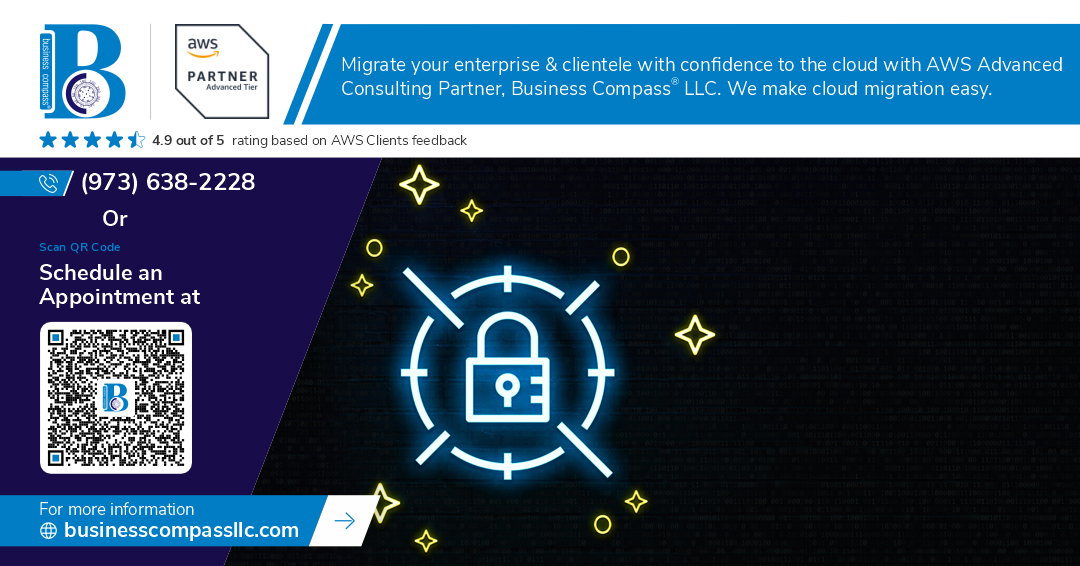Ever had that sinking feeling when your manager asks about the cloud infrastructure’s downtime contingency plan, and you’ve got… nothing? You’re not alone.
Most companies find out their high availability strategy has holes when it’s already too late – usually during an outage that’s costing thousands per minute.
Multi-AZ deployments in AWS offer the redundancy safety net you need before disaster strikes. By distributing your applications across multiple Availability Zones, you’re essentially telling Murphy’s Law to take a hike.
I’ll show you exactly how to implement these multi-AZ architectures for genuine fault tolerance – not the “fingers-crossed” kind that keeps you awake during thunderstorms.
But first, let’s talk about the surprising reason why even well-architected systems still fail when deployed in a single AZ…
Understanding Multi-AZ Deployments in AWS
What is a Multi-AZ deployment and why it matters
Multi-AZ deployment in AWS isn’t just another technical term—it’s your infrastructure’s safety net. When you set up Multi-AZ, AWS automatically creates and maintains a replicated standby database in a different Availability Zone. The magic happens behind the scenes: your data syncs across these zones in real time.
Why should you care? Because servers fail. Networks glitch. Entire data centers can go down. When disaster strikes your primary instance, AWS automatically flips traffic to your standby without you lifting a finger. Most of your users won’t even notice the hiccup.
Key differences between Multi-AZ and single zone deployments
Single zone deployments are like putting all your eggs in one basket—convenient until something breaks:
| Multi-AZ Deployments | Single Zone Deployments |
|---|---|
| Automatic failover protection | Manual recovery required |
| Minimal downtime during failures | Extended outages possible |
| Zero data loss during zone failures | Potential for data loss |
| Higher costs | Lower initial investment |
| Synchronous replication | No built-in redundancy |
AWS regions vs. Availability Zones explained
Think of AWS Regions as separate cities and AZs as neighborhoods within each city. Each AWS Region (like us-east-1) contains multiple Availability Zones (us-east-1a, us-east-1b, etc.). These zones are physically separated—different buildings with independent power, cooling, and networking—but connected by super-fast, low-latency links.
The brilliance? A flood or power outage in one zone won’t affect the others, yet they’re close enough that data transfers between them happen almost instantly.
Business benefits of geographical redundancy
The numbers tell the story. Companies implementing Multi-AZ deployments typically see:
- 99.99% availability compared to 99.9% with single-zone setups
- Downtime reduced from hours to minutes during failures
- Protection against both planned maintenance and unplanned outages
Beyond the numbers, there’s peace of mind. Your CTO sleeps better. Your compliance team checks off regulatory requirements. And when disaster strikes somewhere else, you’ll be the one still serving customers while competitors scramble.
Core Multi-AZ Services and Features
A. Amazon RDS Multi-AZ capabilities
Ever had that sinking feeling when your database goes down? Amazon RDS Multi-AZ deployments eliminate that nightmare. They maintain a standby copy of your database in a different Availability Zone, ready to take over if trouble hits the primary.
The beauty? It’s practically hands-off. RDS automatically replicates data to the standby, handles failover without manual intervention, and even maintains the same endpoint so your applications keep running without code changes.
During patches or backups, Amazon smartly uses the standby instance, keeping performance steady for your production workload. And synchronous replication means no data loss during failovers.
B. EC2 Multi-AZ deployment strategies
Your EC2 instances need protection too. The smart move? Spread them across multiple AZs.
Create a template with launch configurations, deploy identical instances in different AZs, and pair them with an Elastic Load Balancer to distribute traffic. Auto Scaling Groups make this even easier by maintaining your desired capacity across zones automatically.
For stateful applications, you’ll need to handle session persistence and data replication between instances. EBS Multi-Attach works in some regions, but application-level replication often provides better flexibility.
C. Amazon S3 cross-region replication
S3 already stores data redundantly within a region, but cross-region replication takes your fault tolerance to another level.
With a few clicks, you can replicate objects to a bucket in a completely different geographic region. This gives you:
- Protection against regional disasters
- Lower latency for global users
- Better compliance with data sovereignty requirements
- A solid foundation for disaster recovery
The catch? You’ll pay for the storage in both regions and the data transfer between them.
D. Elastic Load Balancing across multiple zones
ELB is your traffic cop for high availability. It distributes incoming traffic across multiple targets in several AZs, and automatically stops sending requests to unhealthy instances.
Three flavors to choose from:
| Load Balancer Type | Best For |
|---|---|
| Application Load Balancer | HTTP/HTTPS traffic with content-based routing |
| Network Load Balancer | Ultra-high performance TCP/UDP traffic |
| Classic Load Balancer | Legacy applications on EC2-Classic |
When configured for cross-zone load balancing, traffic gets distributed evenly to all healthy instances regardless of which AZ they’re in.
E. Auto Scaling Groups spanning multiple AZs
Auto Scaling Groups are the secret sauce for both high availability and cost efficiency. They maintain your desired instance capacity across multiple AZs, automatically replacing unhealthy instances and scaling based on demand.
The multi-AZ magic happens in the configuration. Set up the group to span multiple AZs, and AWS handles the rest – balancing capacity across zones and maintaining your app’s availability even if an entire AZ fails.
For maximum resilience, configure your ASG with at least one instance per AZ, and set the minimum group size accordingly.
How Multi-AZ Deployments Ensure High Availability
A. Automatic failover mechanisms explained
Picture this: Your primary database server just crashed in us-east-1a. In a traditional setup, you’d be scrambling to restore services while your customers see error messages. With Multi-AZ deployments? Your AWS infrastructure simply shrugs and keeps running.
Multi-AZ deployments shine because they implement automatic failover that requires zero human intervention. When your primary instance faces issues, AWS detects the failure through continuous health checks and instantly promotes the standby instance in another Availability Zone to primary status. The DNS record automatically updates, redirecting traffic to the healthy instance.
The magic happens in minutes – sometimes even seconds. Your applications reconnect using the same endpoint, and most users won’t even notice the hiccup.
B. Eliminating single points of failure
AWS Multi-AZ deployments are basically insurance against Murphy’s Law. They distribute your infrastructure across physically separate data centers, each with independent power, cooling, and networking.
The beauty of this approach? Even if an entire Availability Zone goes dark (yes, it happens), your workloads keep humming along in other zones. Your databases, EC2 instances, load balancers – everything critical gets duplicated across zones.
This redundancy removes those nasty single points of failure that keep DevOps teams up at night. It’s like having backup generators, spare tires, and emergency exits all built into your infrastructure.
C. Synchronous data replication strategies
The backbone of Multi-AZ reliability is synchronous data replication. When your application writes data to the primary instance, AWS doesn’t consider the transaction complete until it’s safely copied to the standby instance.
This synchronous approach ensures your standby database is an exact mirror of the primary one. No data loss during failover. No outdated records. No reconciliation headaches.
For RDS databases, this replication happens at the storage layer, minimizing performance impact while maximizing data integrity. The tradeoff? A slight increase in write latency – typically milliseconds – which is negligible compared to the protection it provides.
D. Achieving near-zero downtime during maintenance events
Nobody likes surprise maintenance windows. With Multi-AZ deployments, routine database patching and backups become non-events.
Here’s the trick: AWS performs maintenance on the standby instance first. Once complete, it initiates a brief failover, promoting the patched standby to primary status. The original primary then becomes the standby and receives the updates.
This clever dance ensures your applications experience only momentary interruptions – typically 60-120 seconds during the failover. For most workloads, connection pooling and retry logic handle these brief transitions seamlessly.
The best part? You can schedule automated backups to run against the standby instance, eliminating performance impacts on your production workload altogether.
Fault Tolerance in Multi-AZ Architecture
A. Isolating component failures to prevent cascade effects
Ever had one small issue turn into a full-blown disaster? That’s what AWS Multi-AZ deployments prevent. By distributing your workloads across multiple Availability Zones, you’re essentially putting firewalls between potential failure points.
Here’s the magic: when a component fails in one zone, the problem stays there – it doesn’t ripple through your entire system. AWS achieves this through strict boundary isolation and independent infrastructure in each AZ.
Think about it like this: if your database server crashes in us-east-1a, your replica in us-east-1b keeps running without missing a beat. Your users might not even notice the hiccup.
B. Network redundancy and connectivity options
AWS doesn’t play around with network connectivity. Each AZ connects to multiple tier-1 transit providers, ensuring no single network outage takes you offline.
For Multi-AZ setups, AWS provides:
- Dedicated high-bandwidth, low-latency links between zones
- Cross-zone load balancing to distribute traffic intelligently
- VPC subnet isolation that maintains security boundaries
- Automatic routing updates that detect and bypass failures
C. Data durability guarantees across zones
Your data is too important to lose. Period. That’s why AWS Multi-AZ deployments replicate your data synchronously across zones.
For RDS databases, writes aren’t considered complete until they’re confirmed in both the primary and standby instances. EBS volumes can be configured for cross-zone replication, giving you 99.999% durability guarantees.
D. Disaster recovery capabilities
When things really go sideways, Multi-AZ is your lifeline. The system handles major outages by:
- Automatically failing over to healthy zones (typically in 60-120 seconds)
- Maintaining identical environments across zones for seamless transitions
- Supporting automatic database failover without application changes
- Providing regional resilience against natural disasters or large-scale outages
Implementing Multi-AZ Deployments
Best practices for architecting Multi-AZ applications
Building solid Multi-AZ applications isn’t just about checking a box—it’s about thoughtful architecture. Start with stateless application tiers that don’t depend on local storage. Your EC2 instances should be disposable, ready to be replaced without affecting your application.
Always use Auto Scaling Groups that span multiple AZs. The magic happens when you configure them to maintain balanced capacity across zones—so if one zone fails, the others pick up the slack immediately.
For data persistence, AWS-managed services are your best friends. RDS, ElastiCache, and DynamoDB offer built-in Multi-AZ capabilities without the headache of managing replication yourself.
Don’t forget about your networking! Set up subnet pairs across zones with consistent CIDR blocks, and use Application Load Balancers to route traffic intelligently across healthy instances.
Cost considerations and optimization strategies
Multi-AZ deployments cost more—no way around it. But smart planning makes a huge difference.
Data transfer between AZs isn’t free, so be strategic about what crosses zone boundaries. Consider these approaches:
- Use caching layers to minimize database reads
- Batch your cross-AZ communications when possible
- Implement compression for data that must travel between zones
Reserved Instances can slash your EC2 costs if you’re committed to long-term Multi-AZ. For workloads with flexible timing, Spot Instances in secondary zones provide cheap additional capacity.
Monitoring and testing your Multi-AZ deployment
Fancy Multi-AZ architecture means nothing if you don’t know it’s working. Set up CloudWatch dashboards that show metrics by zone to spot imbalances quickly.
Amazon’s Route 53 health checks can monitor endpoints across zones, triggering alerts when problems emerge. But don’t stop there—create custom metrics for cross-AZ latency to identify potential bottlenecks.
Testing is crucial. Schedule regular chaos engineering exercises:
- Simulate AZ failures by taking down resources
- Test database failovers during maintenance windows
- Verify your application responds correctly when a zone becomes unavailable
Performance considerations when spanning availability zones
Cross-AZ traffic introduces latency—count on 1-2ms extra round-trip time. This might sound tiny, but for chatty applications making thousands of calls, it adds up fast.
Database design becomes even more critical in Multi-AZ setups. Consider these strategies:
- Use read replicas in each zone for read-heavy workloads
- Implement connection pooling to reduce connection overhead
- Configure appropriate timeouts that balance responsiveness with stability
For global users, supplement your Multi-AZ strategy with CloudFront distributions to cache content closer to users.
Migration paths from single-zone to Multi-AZ
The journey to Multi-AZ doesn’t have to happen overnight. Start with your stateless components—they’re the easiest to distribute across zones.
For databases, AWS makes it surprisingly simple. RDS instances can be converted to Multi-AZ with just a few clicks (though expect some downtime during the initial sync).
Application servers require a thoughtful approach:
- Deploy your application to a second AZ but keep it out of the load balancer
- Verify functionality with test traffic
- Gradually shift production traffic to include both zones
Remember: Multi-AZ isn’t an all-or-nothing proposition. Prioritize your most critical components first, then expand your coverage as your architecture matures.
Multi-AZ deployments serve as the backbone of resilient AWS infrastructure, ensuring applications remain available even during unexpected failures. By distributing workloads across multiple Availability Zones, organizations benefit from enhanced business continuity, minimized data loss risks, and improved performance through reduced latency. With services like RDS, ElastiCache, and EC2 offering built-in Multi-AZ capabilities, AWS provides a comprehensive framework for creating fault-tolerant architectures.
Implementing Multi-AZ deployments requires strategic planning, including proper subnet configuration, automated failover mechanisms, and regular testing procedures. While this approach may involve additional costs, the protection against downtime and potential revenue loss makes it an essential investment for business-critical applications. As cloud infrastructure continues to evolve, Multi-AZ architectures remain a fundamental strategy for organizations seeking to maintain robust, always-available services in an increasingly digital world.




















